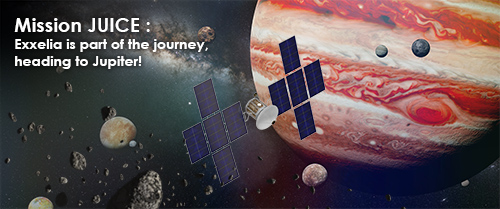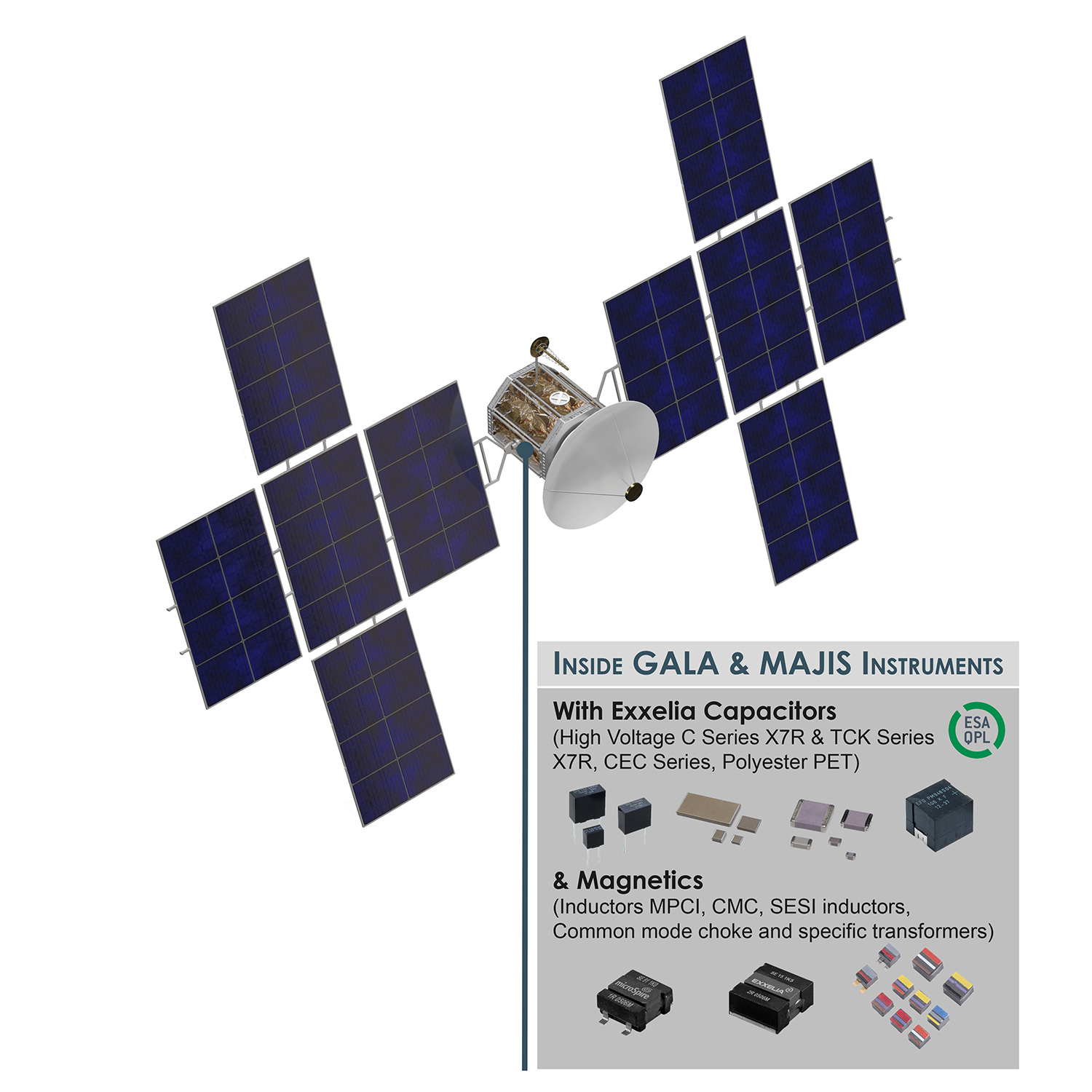JUICE Mission to Jupiter: Exxelia components ready to withstand extreme space conditions
On April 14, 2023, the JUICE (JUpiter ICy moons Explorer) mission will launch to explore the icy moons of Jupiter. It is an incredible event that has been long-awaited by astronomy enthusiasts. But did you know that components from Exxelia are on board this satellite?
 Exxelia is known for the quality and reliability of its products, making it a popular choice for space missions.
Exxelia is known for the quality and reliability of its products, making it a popular choice for space missions.
Exxelia components are used in many embedded systems on board the JUICE mission, including capacitors (High Voltage C Series X7R & TCK Series X7R, CEC Series NP0, Polyester PET PM 948) and magnetics (Inductors MPCI, CMC, SESI inductors, Common mode choke and specific transformers). They have been carefully designed and tested to withstand the extreme conditions of space.
Exxelia has been working closely on this project for more than 10 years, notably on the GALA (GAnymede Laser Altimeter) and MAJIS (Moon and Jupiter Imaging Spectrometer) instruments.
Conditions in space are extreme, with high levels of radiation, drastic temperature variations, and intense vibrations. Exxelia components have been designed to withstand these conditions, providing consistent and reliable performance throughout the mission.
1st European mission to Jupiter. Focusing on its icy moons and evaluating the potential for habitable worlds.
The JUICE mission is an ambitious undertaking that aims to explore Jupiter's icy moons and study their composition and history. This mission will help us better understand the evolution of the solar system and search for signs of life beyond Earth.

More information about the mission : https://sci.esa.int/web/juice/